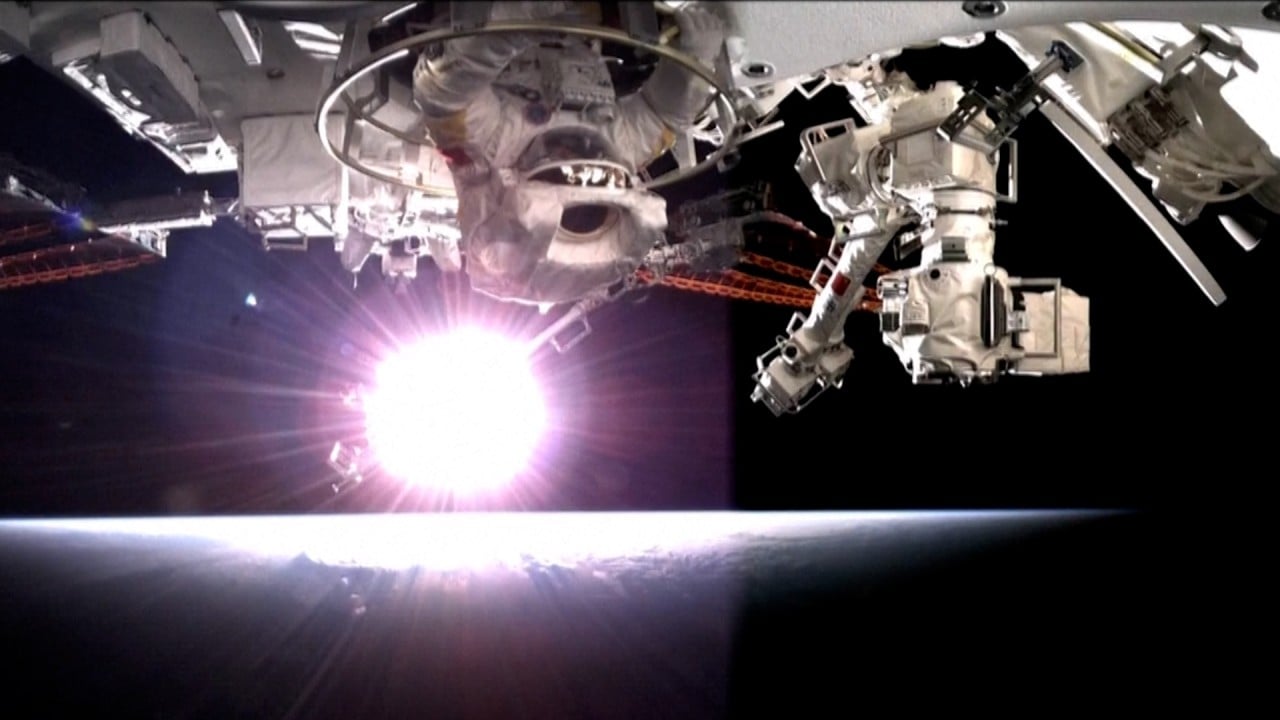
Year of the Dragon: China sends Spring Festival gifts to Tiangong space station astronauts
- The Tianzhou 7 has delivered fresh fruit and carefully chosen treats for Lunar New Year celebrations in low-Earth orbit
- The cargo mission took just three hours to reach the station, where the three-man crew has been working since October
The cargo ship left the Wenchang Satellite Launch Centre in the southern island province of Hainan at 10.27pm Beijing time on Wednesday and docked three hours later at the Tiangong, according to the China Manned Space Agency (CMSA).
Commander Tang Hongbo, Tang Shengjie and Jiang Xinlin had not yet entered the supply ship to start transferring the 5.6 tonne cargo to the space station – their home since October – at the time of the CMSA announcement.
In addition to the larger equipment needed to sustain the Tiangong’s operation and research tasks, the Tianzhou 7 carried more than 2 tonnes of daily necessities for the crew, according to state news agency Xinhua.
These included 90kg (200lb) of fruit, as well as special foods and other items for the crew’s celebration of the Lunar New Year, which begins on February 10.
China shows full structure of Tiangong space station in first panoramic images
“We have carefully prepared ‘blind boxes’ for the crew to open during the Chinese New Year, which will hopefully present a unique Year of the Dragon from our space station,” said Yin Rui, deputy commander of CMSA’s astronaut system.
The cargo ship also delivered “game-changing” novel power sockets, small and easy to use for in-orbit maintenance and replacements, Xinhua said.
The Tianzhou 7 cargo ship and the Tianzhou 6, which launched in May, are among the world’s most powerful spacecraft, with a maximum payload capacity of 7.4 tonnes to low-Earth orbit.
The upgraded versions of the Tianzhou family have enabled China to reduce the frequency of replenishing its space station from every six months to eight months. But the journey could be shorter, following the latest delivery.
The Tianzhou 7’s trajectory was altered from previous missions, to achieve a significant time-saving from the conventional 6.5 hours from launch to docking with the T-shaped space station.
Li Zhiyong, an engineer from the China Academy of Spacecraft Technology which developed the Tianzhou 7, said the success of the new trajectory meant it could serve as an alternative for future autonomous rendezvous and docking supply missions.
In an interview with state broadcaster CCTV on Wednesday, China’s first astronaut Yang Liwei said that China is planning three more trips to the Tiangong space station this year.
These will include the crewed Shenzhou 18 and 19 missions, as well as Tianzhou 8 – another cargo mission – that will launch around August, said Yang, currently deputy chief designer for the manned space programme.
Yang said China is also speeding up development of the crucial facilities needed to land Chinese astronauts on the moon, which the country aims to achieve before 2030.
Heavy-lifting rockets, the spacecraft and moon lander have all entered the prototype phase with key technologies figured out, he said.
China’s ambition to land astronauts on the moon is often portrayed as a race with the US, which has its own plans for a crewed mission to the lunar surface in 2026, according to the latest timeline.


